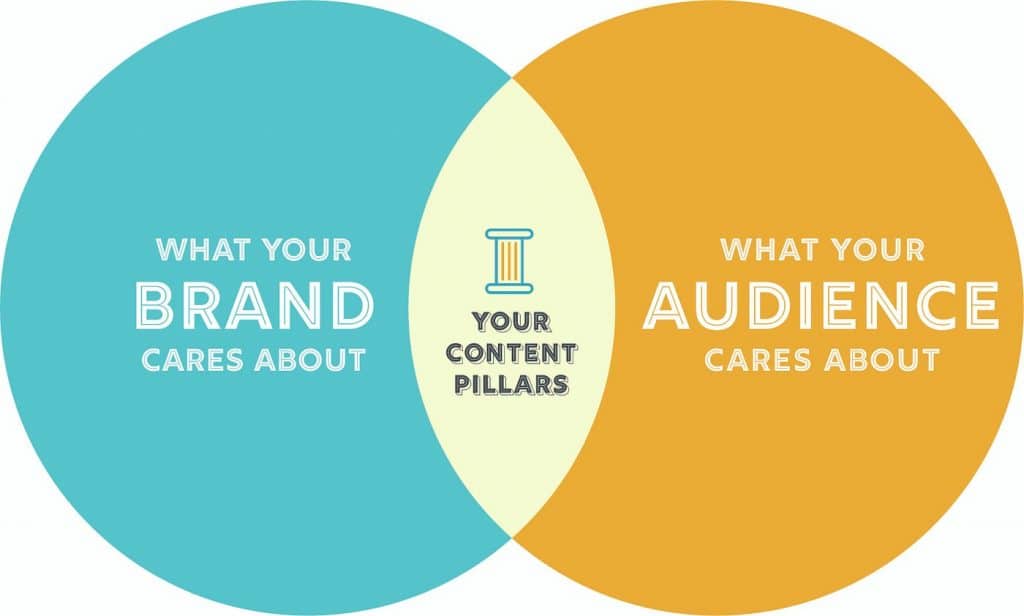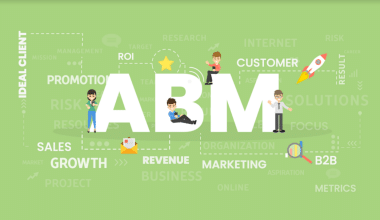As an experienced marketer, I’ve navigated the complex world of product advertising, learning its subtleties and mastering its strategies. In this blog article, I’ll delve into the art of product advertising, revealing tried-and-true strategies and personal insights that can boost your brand’s visibility and increase sales.
What is Product Advertising?
Product advertising is the process of promoting and selling goods or services via several media. It’s all about connecting with your target audience, understanding their requirements, and positioning your product as the solution.
Key Takeaways
- Product advertising is the strategic promotion of goods or services across various media channels, aimed at connecting with target audiences and positioning products as the solution to their needs.
- Effective product advertising differentiates your product in the competitive market, creates brand awareness, and drives sales by crafting a resonant narrative around the product.
- Key benefits of product advertising include introducing and promoting products to the market, informing customers of benefits, distinguishing products from competitors, targeting specific audiences effectively, and establishing stronger customer-company relationships.
- Product Advertising encompasses diverse channels like digital advertising (including online display ads, social media, SEM, email, content, and mobile advertising), TV, radio, print, outdoor, direct marketing, event marketing, point-of-sale, cinema, and experiential marketing.
- Successful product advertising strategies include understanding the audience, highlighting unique selling propositions, leveraging multiple channels, incorporating engaging visuals, utilizing customer testimonials, and being adaptable to feedback and market trends.
Why Product Advertising is Important
In a competitive market, good product advertising may set your product apart from competitors, raise brand awareness, and ultimately increase sales. It’s about creating a story around your product that connects with your target audience.
Benefits of Product Advertising
Years of experience have taught me that good product advertising is more than just showing a product; it’s also about narrative, analyzing consumer behavior, and using the appropriate channels. Here are some of the advantages of product advertising:
#1. Introduces and promotes your product to the market
Whether you’re a well-known brand or a small firm launching your first product, customers need to understand what you’re offering. You want to persuade them that your product and brand are the real deal.
Product advertising enables you to confidently walk onto the stage and tell everyone, “Hey guys, I have this cool thing for you.”
#2. Informs customers about its benefits
Your product may have an unending list of advantages, but few people have the time or patience to sit down and read them. Product advertising conveys the most important information in brief, bite-sized chunks—enough to pique your customer’s interest without boredom.
#3. Distinguishes you from your competition
Does your product have superior ingredients or higher-quality components than your competitor’s? A cleaner design? A better price?
Product marketing allows you to make this evident.
- It’s never a good idea to name your competition in your marketing for a variety of reasons.
- To keep customers focused solely on your product,
- To prevent litigation and other unpleasant situations with rival brands,
- To demonstrate faith in your product.
A good product advertisement will explain everything that distinguishes your product without needing to mention it.
#4. Targets targeted customers effectively
Product advertising allows you to reach out to your target audience rather than simply everyone.
Because product marketing must be quick and direct, you must address your audience’s primary pain issues right away. You must be completely focused on their needs and how you might assist them.
To ensure that you can connect with your target audience, include a defined buyer persona in your marketing strategy before you begin thinking about commercials. Having a clear idea of who you want to talk to will make communicating with them much easier.
#5. Creates a stronger relationship between your customers and the firm
Good communication leads to a positive connection.
Product advertising is one of several digital techniques available to help you establish direct contact with your target customer. You may build trust and understanding among your customers by properly communicating the benefits and distinctive aspects of your product through marketing. Monitoring the KPI for product development can provide useful information about the effectiveness and efficiency of your marketing efforts. This relationship improves customer pleasure, raises the possibility of repeat purchases, and builds brand loyalty.
#6. Reinforces brand image
“Maybe she was born with it. Maybe it is __.”
If your mind immediately filled in the blank without me having to give you any suggestions regarding the brand name, it suggests Maybelline performed an excellent job of reinforcing its brand image in the advertising.
You can do it as well.
Even simple things like mentioning your slogan or using your company colors will help people remember your brand.
#7. Reduces misunderstandings
We’ve previously established that a strong product advertisement enables you to interact effectively and immediately with your intended audience.
The wonderful thing about this message is that it not only answers your customer’s wants but also helps to dispel common misconceptions about your product.
Smart advertising allows you to address objections or concerns head-on without devoting too much time to them.
Product Advertising Strategies
Marketers and business owners can use a variety of methods to successfully promote their products. Let’s talk about the ten basic types of product advertising you can use:
#1. Digital advertising
This type of product advertising is all about using online channels to promote your items so they reach consumers across numerous online platforms, such as social media, search, display ads, and email marketing.
Online display advertisements
Display advertising is targeted advertisements that appear as website banners, popups, and sidebars for your desired user segment, such as age group, gender, geography, and so on.
Online display advertising combines product images, text, or your brand emblem with a URL that directs potential buyers to a landing page where they may learn more or buy a product.
Social media advertising is sponsored product advertising that is displayed in your target audience’s social feeds on platforms such as Facebook, TikTok, YouTube, Instagram, LinkedIn, and X.
Search Engine Marketing (SEM)
SEM stands for running product-specific ads, such as Google ads. They can assist you in reaching new clients who are searching the internet for certain product features and benefits.
Email Marketing
Email marketing entails creating and distributing direct email campaigns to promote a product and provide special incentives upon purchase. To re-engage subscribers, consider sending a product launch discount campaign.
Read Also: The 2024 Showdown: Unveiling The True Best Email Services For Every Need
Content Marketing
Information marketing, another effective kind of digital product advertising, entails educating buyers about your items through useful information such as blog posts, infographics, case studies, videos, and more.

Mobile Advertising
This refers to product advertisements displayed on mobile devices, such as smartphones and tablets. These product advertisements are mobile-friendly and can appear on apps and websites. Consider promotional SMS, web push notifications, and in-app notifications.
Influencer Marketing
This is when you work with a well-known influencer in your field to promote your product to their followers and increase sales.
#2. Product advertising on television
Television advertising has been around for decades and is still a popular promotional medium for a few online firms due to its capacity to reach a wide range of viewers worldwide.
There are three main types of television advertising:
Commercial spots
Commercial spots are standard TV ads that last 15–60 seconds and occur between television shows.
Sponsored Programs
You can sponsor a certain portion of a television show or program to quietly promote your product and its features and benefits. For example, consider naturally incorporating your product into a scene from a television show.
Infomercials
Infomercials are longer than conventional advertisements. You can run a standalone infomercial if you need extra time to advertise a product and explore its features and benefits in depth.
#3. Radio advertising
This is another classic yet most sought-after product advertising type, which is classified as:
Radio commercials
Online firms can pay for a spot on a popular radio show to promote their products. These commercials typically last between 15 and 90 seconds, and they may include appealing voiceovers and background music.
Sponsorships
With radio sponsorships, you can sponsor a section just to promote your product and raise awareness.
#4. Print advertising
Print advertising involves promoting products through print media, such as:
Newspapers and Magazines
Ads in daily newspapers and weekly or monthly magazines that your target audience reads or is interested in.
Brochures and Flyers
These are given at events or via direct mail and aim to pique the reader’s interest with product imagery, slogans, and unique deals.
#5. Outdoor product advertising
Outdoor advertising aims to reach a large audience and is carefully placed in high-traffic public locations. There are three main types of outdoor advertising:
Billboards and Posters
They are placed in public areas and take up more space than other product advertisements, such as on highways and popular hangouts.
Read Also: 5 Billboard Advertising Hacks To Conquer Your Target Audience
Transportation advertising
These are product advertisements placed on public transit vehicles and terminals such as metros, bus stops, and airports.
Street furniture
These are advertisements on public furniture like park seats, kiosks, and bus shelters.
#6. Direct Marketing
Direct marketing is one-on-one communication with a target demographic. The two most popular methods of direct marketing used to promote items are:
Direct Mail
Use personalized letters, catalogs, or handwritten postcards to draw customers’ attention to your products and perks.
Telemarketing
Telemarketing is based on direct selling, with phone calls used to engage prospects and persuade them to learn more or buy your product.
#7. Event Marketing
Event marketing enables you to communicate directly with potential customers, resulting in a more immersive and personalized customer experience. It can be broadly divided into two types:
Trade Shows and Exhibitions
You can set up booths or displays to demonstrate your products and communicate with potential clients at industry trade fairs and exhibits.
Sponsored Events
Sponsor community runs, sports, cultural, or local activities to raise product and brand awareness. This can also help your brand gain media attention and exposure.
#8. Point-of-sale (POS) advertising
POS advertising is ideal for online firms trying to reach potential customers in a physical retail setting. There are two types:
In-store displays
These product advertisements are strategically positioned within a store that your target clients are likely to visit. Ads could be placed as standalone floor stands, on shelves, or on touch screens within a mall.
Product demonstrations and sampling
You may send a sales professional to display your product in person or set up a stand to distribute product samples for prospects to experience before purchasing.
#9. Product advertising in the cinema
Short, interesting product advertisements come before screenings or are placed as posters throughout the halls. For example:
Pre-show commercials
These are engaging video product advertisements that are broadcast to the audience before movie screenings.
Lobby Promotions
These are stand-alone posters for product marketing placed in a movie lobby.
#10. Experiential Marketing
Experiential marketing includes advertising products by providing unique experiences for audiences rather than promoting them through regular means. There are two examples of this type of product advertising:
Interactive campaigns
You might organize participatory events, either offline or online, to attract potential clients who are interested in using your products. Use a combination of email and event marketing to catch and maintain their interest.
Pop-up shops
Setting up pop-up stores and encouraging clients to check out merchandise allows online firms to get a taste of in-person sales.
Product Advertising Examples
A good product advertising campaign communicates the product’s value proposition effectively and resonates with the target audience.
Here are three brands that are using strategic product advertising to outperform their competitors:
#1. Airbnb: Made possible by Hosts campaign
Airbnb utilized experiential and content marketing to educate its audience on the unique experiences that hosts around the world provide.
The brand created high-quality movies to evoke a sense of nostalgia in its clients and encourage them to book vacations again. Despite the campaign’s infancy, Airbnb experienced an increase in website traffic across all client touchpoints.
#2. M.A.C. Cosmetics: Offers personalized email campaigns.
M.A.C.’s email campaigns include personalized product suggestions, cosmetics tips, sneak peeks at new collections, and unique product deals.
The brand clearly classifies its target based on their purchase histories and preferences to engage potential customers with their product advertising campaign.
#3. McDonald’s: outdoor advertising
McDonald’s billboards draw attention like no other brand. The “Breakfast Menu” sundial billboard, which was put at various locations around the United States, was one example of outdoor product advertising that caught our attention.
Key Strategies for Successful Product Advertising
Developing great product advertising campaigns involves a combination of creativity, strategy, and continuous analysis. Here are some critical strategies that firms should use to guarantee that their product advertising connects with their target demographic and produces results.
#1. Know Your Audience
Understand your target audience’s age, gender, income, interests, and lifestyle. This helps you adapt your advertising to their preferences.
Identify the challenges or problems that your target audience is facing and how your product might help them. Addressing these directly in your advertising can boost relevancy and engagement.
Use data on customer behavior, including as purchasing habits and product preferences, to generate more targeted and effective marketing.
#2. Highlight the Unique Selling Propositions (USPs)
Determine what differentiates your product from competition. This could be innovation, quality, pricing, or a distinguishing attribute. In your advertising, make sure you clearly express these unique selling points.
Focus on the advantages, not the features. Highlight how your product’s unique selling points assist the customer by meeting their needs or improving their life in some way.
Ensure that your USP is regularly presented throughout all advertising materials to support your product’s unique market positioning.
#3. Leverage Multiple Channels
To increase your reach, combine digital channels (such as social media, email, and PPC) with conventional means (such as TV, radio, and print).
Tailor your advertising content to the specific channel. For instance, shorter and more visually appealing content on social media.
To achieve a unified brand experience, ensure that your messaging is consistent across mediums.
#4. Incorporate engaging visuals
Use eye-catching, professionally created pictures and videos. Good images can attract attention and make your product more memorable.
Demonstrate your product in action to let potential buyers understand its use and efficacy.
Maintain consistent visual branding (colors, typefaces, and style) to increase brand identification.
#5. Utilize customer testimonials
Provide real testimonials from pleased customers. This may include quotes, case studies, or video testimonials.
Choose testimonials that your target audience can relate to, since this will help potential consumers understand the value of your product in their own lives.
To increase confidence and credibility, highlight any endorsements or ratings from reliable sources.
#6. Monitor and adapt
Analyze your advertising’s performance regularly, taking into account engagement, conversion rates, and ROI. Use Google Analytics for digital initiatives.
Encourage and track consumer feedback. Refine your advertising strategy based on the knowledge acquired from customer interactions.
Prepare to change your advertising strategies based on market trends, customer input, and performance statistics. Maintain flexibility and responsiveness to changes.
Throughout my work, I’ve discovered that adapting to market trends and being willing to experiment are essential. For example, focusing on digital platforms and leveraging data-driven insights resulted in major improvements to my efforts.
Businesses may use these strategies to create product advertising campaigns that not only catch attention but also truly resonate with their target audience, resulting in increased engagement and conversions. It is a dynamic process that necessitates ongoing attention and adaptation to be effective in a competitive market.
Common Mistakes in Product Advertising
#1. Generic messaging
Using broad, non-specific messaging does not engage certain target groups. Generic communications lack the personal touch that speaks to certain client segments, resulting in a disconnect between the product and its potential users.
#2. Neglecting customer feedback
Ignoring customer feedback might result in a misalignment between what the product provides and what customers need or want.
Neglecting negative comments, in particular, can leave reoccurring concerns unresolved, thereby damaging the brand’s reputation and customer trust.
#3. Misunderstanding of customer demographics and psychographics
Incorrectly defining or comprehending your target demographic can result in inefficient advertising that does not connect with your intended buyers.
For example, an ad campaign aimed at millennials may fall flat if it contains references or tones that do not reflect their ideals or lifestyle.
#4. Stagnant Advertising Strategies
Failure to update and test advertising strategies might lead to stale and ineffective commercials.
Not keeping up with changing market trends and consumer tastes can make your advertisements appear out of date.
#5. Advertisement lacking feedback mechanisms
Not include or neglecting outlets for customer input in your advertising campaign is a missed opportunity to improve.
Failure to communicate with customers and solicit their feedback might result in a lack of awareness about how your product is regarded in the market.
Addressing these problems is critical to a successful product advertising plan. Businesses may dramatically improve the effectiveness of their product advertising by focusing on personalized messages, listening to consumer feedback, understanding their audience, constantly updating strategies, and including feedback mechanisms.
Measuring Success in Product Advertising
Measuring performance in product advertising is critical for determining the impact of your campaigns and making informed decisions. Here are some specific approaches to measure performance in product advertising:
#1. Increased sales
- Sales Volume: Monitor the number of products sold before, during, and following advertising campaigns. A big increase in sales may indicate effective advertising.
- Revenue Growth: Determine the total revenue generated by sales. To determine impact, compare revenue generated during the advertising period to the preceding ones.
- Conversion Rate: Determine the percentage of visitors who purchase after seeing your ads. Higher conversion rates indicate successful advertising.
#2. Increased Website Traffic
- Traffic Sources: Determine which advertising channels are driving the most traffic to your website. This helps us learn which channels are the most effective.
- User Engagement: Keep track of indicators such as average session time and page count for each session. Increased involvement is generally associated with good product advertising.
- Bounce Rate: Determine the bounce rate for your advertisements. A reduced bounce rate can indicate that the advertising is relevant and interesting to your target demographic.
#3. Improved Brand Recognition
- Brand Mentions: Use social listening tools to monitor brand mentions on social media and other internet channels. more mentions can indicate more brand awareness.
- Customer Surveys: Conduct surveys to assess brand familiarity and perceptions before and after advertising campaigns.
- Keep an eye on the rate of repeat purchases: A rise in repeat customers may be a sign of strong brand loyalty, which is frequently a result of efficient advertising.
Conclusion
Effective product advertising requires a combination of creativity, strategy, and ongoing learning. As you begin your product advertising journey, keep in mind that knowing your target demographic and producing a captivating message are critical components of successful campaigns. Allow your products to tell a compelling and conversion-oriented story.
Feel free to share your product advertising experiences and strategies in the comments below.
- BEST WAYS TO ADVERTISE YOUR BUSINESS: 10 Tips To Advertise Your Business
- WHAT IS ADVERTISING? All You Should Know
- ADVERTISING vs MARKETING: What is the Difference?
- 11 Best Digital Marketing Companies for Small Businesses






